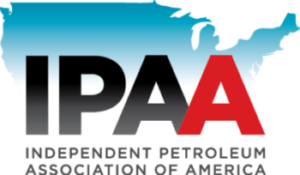May 15, 2015 Opinion: Energy production and species conservation working hand in hand (The Hill)
“America’s independent oil and natural gas producers work hard every day to ensure that energy development, environmental stewardship, species conservation, and economic growth can thrive together across the nation.”

Energy production and species conservation working hand in hand
By Barry Russell, Independent Petroleum Association of America President
The Hill Op-Ed
May 15, 2015
This Friday marks Endangered Species Day, an event intended to spotlight and encourage the conservation efforts underway to protect endangered and threatened species and their habitats. As companies who work every day to provide the energy we all rely upon, while protecting the environment we all care about, America’s independent oil and natural gas producers take great pride in the efforts they are making to support species conservation across the country.
In the West, independent oil and natural gas companies are working closely with states, local communities and stakeholders, and conservation groups in the development and implementation of state-based plans to conserve the greater sage-grouse. Some of these initiatives include Colorado’s Greater Sage-Grouse Conservation Plan and Wyoming’s Sage-Grouse Core Area Program. One leading independent oil and gas company, for example, runs an annual conservation and restoration project in the Powder River Basin alongside the Bureau of Land Management (BLM) and the Wyoming Conservation Corps to thin and remove invasive trees across priority sage-grouse habitat on BLM lands.
In recognition of the value of these collaborative efforts, Secretary of the Interior Sally Jewell has stated that her department is “more determined than ever to work with the states, ranchers, energy developers, and other stakeholders who are putting effective conservation measure in place” so as to avoid the need to list the greater sage-grouse as endangered under the Endangered Species Act (ESA).
In addition to supporting and complying with state-based plans, oil and natural gas companies also utilize various resources and techniques to limit the impact of their operations on sage-grouse and other species. Thanks to the advancement of hydraulic fracturing and improved horizontal drilling technologies, energy producers are able to access reserves miles away from the well pad. This practice enables operators to greatly reduce the number of wells required to develop oil and natural gas, thus reducing land disturbances and fragmentation of habitat. As Secretary Jewell has acknowledged, this practice gives operators “an opportunity to have a softer footprint on the land.”
Many energy companies in the 11-state range of the greater sage-grouse are also consolidating their operations to limit surface disruptions and adapting equipment to mirror the surrounding environment, reducing the visual disturbance to the natural habitat. As a recent peer-reviewed report from researchers at Anadarko Petroleum found, “new oil and gas development is being deployed at lower pad densities and should reduce impacts” on sage-grouse breeding ground. Companies also execute rigorous reclamation plans after operations are complete, ensuring the well pad area is restored to its original condition.
Oil and natural gas companies are also working to limit their impact on species in the eastern states, including the northern long-eared bat that was listed as threatened this April. As the U.S. Fish and Wildlife Service recently concluded, natural gas development activities, even in the most intense areas of development, are not having a “significant population-level effect” on the bat population. In fact, according to an April 2014 Shale Gas Monitoring Report published by the Pennsylvania Department of Conservation and Natural Resources, the yearly impact of natural gas development on Pennsylvania’s forests is about 150 times smaller than the impact of forest management activities.
America’s independent oil and natural gas producers work hard every day to ensure that energy development, environmental stewardship, species conservation, and economic growth can thrive together across the nation. Like many other industries, oil and natural gas companies strive to abide by and go beyond the numerous federal and state regulatory requirements in order to minimize their impact on the environment. By working with local and state agencies and implementing advanced technology and conservation measures, these companies are ensuring domestic energy development and the continued protection of our land and species continue hand in hand.
Russell is the president and CEO of the Independent Petroleum Association of America, the leading, national upstream trade association representing oil and natural gas producers that drill 95 percent of the nation’s oil and natural gas wells. These companies account for 54 percent of America’s oil production, 85 percent of its natural gas production, and support more than 2.1 million American jobs.








